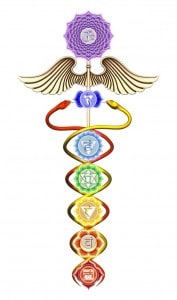 Dermatitis
Dermatitis
See also acne, allergies, detox, eczema, psoriasis.
Dermatitis encompasses several skin disorders. Any skin inflammation may be considered dermatitis. Substances that irritate the skin, allergic reactions to drugs, detergents, and other chemicals are all culprits. Dermatitis can affect almost any area of the body. Redness, scaling, and thickening of the skin may occur. Pinpointing the cause of the problem is the first step toward alleviating the symptoms.
Dermatitis is not an age specific disorder and can appear on any one and can appear anywhere on the body, although as mentioned above, it is most often seen on legs, feet, arms and ears. There are often predispositions to this disorder. It is seen in heredity and can be traced through family history.
Dermatitis is divided into different classifications. Acute and chronic dermatitis are differentiated by a time period as well as symptoms. Acute dermatitis is seen with erythema and edema in papules, vesicles and sometimes large blisters.Chronic dermatitis is seen as lichenification, scaling and fissures. There is a thickening of the dermal layer. Contact dermatitis is another classification, which is skin irritation due to exogenous agents such as water and other fluids, abrasives such as cleaning products, chemicals such as acids and alkalis as well as solvents and detergents.
An extensive language has been developed to standardize the description of skin lesions, including lesion type, (called primary morphology), lesion configuration (called secondary morphology), texture, distribution and color. A rash is a general term for a “temporary skin eruption”.
The “Cross Training” Support Program ® was developed by Andrew Pacholyk, MS, L.Ac as a multi-layered health system for healing. This great resource is for those looking for a sensible and easy-to-use guide to the best researched alternative therapies. Developed and referenced from the foremost experts on nutrition, herbs, acupuncture, exercise, homeopathy, touch therapies and the metaphysical arts, this program allows one to use an “across the board” method for healing.
The following maladies are all situations that can benefit from a “cross training” of therapies and support. From acupuncture, herbs, exercises and nutrition to such treatments as homeopathy, massage and lifestyle changes are combinations of therapies that have shown to help in many situations. These “Complementary Therapies” are the ‘cross training program’ of Alternative Medicine and a great place to start on your healing journey.
*Disclaimer: This information is not intended to be a substitute for professional medical advice. You should not use this information to diagnose or treat a health problem or disease without consulting with a qualified healthcare provider. Please consult your healthcare provider with any questions or concerns you may have regarding your condition. The information provided is for educational purposes only and is not intended as diagnosis, treatment, or prescription of any kind. The decision to use, or not to use, any information is the sole responsibility of the reader. Statements contained herein have not been evaluated by the Food and Drug Administration. These products are not intended to diagnose, treat and cure or prevent disease.
Determining Your Skin Problem
Macules are flat, non-palpable lesions usually < 10 mm in diameter. Macules represent a change in color and are not raised or depressed compared to the skin surface. A patch is a large macule. Examples include freckles, flat moles, tattoos, and port-wine stains, and the rashes of rickettsial infections, rubella, measles (can also have papules and plaques), and some allergic drug eruptions.
Plaques are palpable lesions > 10 mm in diameter that are elevated or depressed compared to the skin surface. Plaques may be flat topped or rounded. Lesions of psoriasis and granuloma annulare commonly form plaques.
Papules are elevated lesions usually < 10 mm in diameter that can be felt or palpated. Examples include nevi, warts, lichen planus, insect bites, seborrheic and actinic keratoses, some lesions of acne, and skin cancers. The term maculopapular is often loosely and improperly used to describe many red skin rashes; because this term is nonspecific and easily misused, it should be avoided. Nodules are firm papules or lesions that extend into the dermis or subcutaneous tissue. Examples include cysts, lipomas, and fibromas.
Vesicles are small, clear, fluid-filled blisters < 10 mm in diameter. Vesicles are characteristic of herpes infections, acute allergic contact dermatitis, and some autoimmune blistering disorders (eg, dermatitis herpetiformis). Pustules are vesicles that contain pus. Pustules are common in bacterial infections and folliculitis and may arise in some inflammatory disorders including pustular psoriasis.
Bullae are clear fluid-filled blisters > 10 mm in diameter. These may be caused by burns, bites, irritant or allergic contact dermatitis, and drug reactions. Classic autoimmune bullous diseases include pemphigus vulgaris and bullous pemphigoid. Bullae also may occur in inherited disorders of skin fragility.
Urticaria (wheals or hives) is characterized by elevated lesions caused by localized edema. Wheals are pruritic and red. Wheals are a common manifestation of hypersensitivity to drugs, stings or bites, autoimmunity, and, less commonly, physical stimuli including temperature, pressure, and sunlight. The typical wheal lasts about 24 hours.
Scale is heaped-up accumulations of horny epithelium that occur in disorders such as psoriasis, seborrheic dermatitis, and fungal infections. Pityriasis rosea and chronic dermatitis of any type may be scaly.
Erosions are open areas of skin that result from loss of part or all of the epidermis. Erosions can be traumatic or can occur with various inflammatory or infectious skin diseases. An excoriation is a linear erosion caused by scratching, rubbing, or picking.
Ulcers result from loss of the epidermis and at least part of the dermis. Causes include venous stasis dermatitis, physical trauma with or without vascular compromise (eg, caused by decubitus ulcers or peripheral arterial disease), infections, and vasculitis.
Petechiae are nonblanchable punctate foci of hemorrhage. Causes include platelet abnormalities (eg, thrombocytopenia, platelet dysfunction), vasculitis, and infections (eg, meningococcemia, Rocky Mountain spotted fever, other rickettsioses).
Purpura is a larger area of hemorrhage that may be palpable. Palpable purpura is considered the hallmark of leukocytoclastic vasculitis. Purpura may indicate a coagulopathy. Large areas of purpura may be called ecchymoses or, colloquially, bruises.
Atrophy is thinning of the skin, which may appear dry and wrinkled, resembling cigarette paper. Atrophy may be caused by chronic sun exposure, aging, and some inflammatory and neoplastic skin diseases, including cutaneous T-cell lymphoma and lupus erythematosus. Atrophy also may result from long-term use of potent topical corticosteroids.
Scars are areas of fibrosis that replace normal skin after injury. Some scars become hypertrophic or thickened and raised. Keloids are hypertrophic scars that extend beyond the original wound margin.
Telangiectases are foci of small, permanently dilated blood vessels that may occur in areas of sun damage, rosacea, systemic diseases (especially systemic sclerosis), or inherited diseases (eg, ataxia-telangiectasia, hereditary hemorrhagic telangiectasia) or after long-term therapy with topical fluorinated corticosteroids.
Location and Distribution
Are lesions single or multiple? Which particular body parts are affected (example: palms, soles, scalp, mucosal membranes)? Is distribution random or patterned, symmetric or asymmetric? Lesions are on sun-exposed or protected skin? Although few patterns are specifically indicative of a particular condition, some are consistent with certain diseases.
Psoriasis frequently affects the scalp, extensor surfaces of the elbows and knees, umbilicus, and the gluteal cleft.
Lichen planus frequently arises on the wrists, forearms, genitals, and lower legs.
Vitiligo may be patchy and isolated or may group around the distal extremities and face, particularly around the eyes and mouth.
Chronic cutaneous lupus erythematosus has characteristic lesions on sun-exposed skin of the face, especially the forehead, nose, and the conchal bowl of the ear.
Hidradenitis suppurativa involves skin containing a high density of apocrine glands, including the axillae, groin, and under the breasts.
Color
Red skin (erythema) can result from many different inflammatory or infectious diseases. Cutaneous tumors are often pink or red. Superficial vascular lesions such as port-wine stains may appear red.
Orange skin is most often seen in hypercarotenemia, a usually benign condition of carotene deposition after excess dietary ingestion of β-carotene.
Yellow skin is typical of jaundice, xanthelasmas and xanthomas, and pseudoxanthoma elasticum.
Green fingernails suggest Pseudomonas aeruginosa infection.
Violet skin may result from cutaneous hemorrhage or vasculitis. Vascular lesions or tumors, such as Kaposi sarcoma and hemangiomas, can appear purple. A lilac color of the eyelids or heliotrope eruption is characteristic of dermatomyositis.
Shades of blue, silver, and gray can result from deposition of drugs or metals in the skin, including minocycline, amiodarone, and silver (argyria). Ischemic skin appears purple to gray in color. Deep dermal nevi appear blue.
Black skin lesions may be melanocytic, including nevi and melanoma. Black eschars are collections of dead skin that can arise from infarction, which may be caused by infection (eg, anthrax, angioinvasive fungi including Rhizopus, meningococcemia), calciphylaxis, arterial insufficiency, or vasculitis.
Configuration
Linear lesions take on the shape of a straight line and are suggestive of some forms of contact dermatitis, linear epidermal nevi, and lichen striatus.
Annular lesions are rings with central clearing. Examples include granuloma annulare, some drug eruptions, some dermatophyte infections (eg, ringworm), and secondary syphilis.
Nummular lesions are circular or coin-shaped; an example is nummular eczema.
Target (bull’s-eye or iris) lesions appear as rings with central duskiness and are classic for erythema multiforme.
Serpiginous lesions have linear, branched, and curving elements. Examples include some fungal and parasitic infections (eg, cutaneous larva migrans).
Reticulated lesions have a lacy or networked pattern. Examples include cutis marmorata and livedo reticularis.
Herpetiform describes grouped papules or vesicles arranged like those of a herpes simplex infection.
Zosteriform describes lesions clustered in a dermatomal distribution similar to herpes zoster.
Why Skin Issues?
1. Personal or family history of atopy (suggesting atopic dermatitis)
2. Occupational exposures (contact dermatitis)
3. Long-term exposure to sunlight or other forms of radiation (benign and malignant skin tumors)
4. Systemic disease (diabetes and Candida or tinea, hepatitis C, and cryoglobulinemia)
5. Sexual history (syphilis and gonorrhea)
6. Use of drugs (Stevens-Johnson syndrome, toxic epidermal necrolysis)
7. Travel history (Lyme disease, skin infections)
8. A negative history is as important as a positive history. The history of the particular skin lesions is also important, including time and site of initial appearance, spread, change in appearance, and triggering factors.
9. Visual inspection is the central evaluation tool; many skin disorders are diagnosed by the characteristic appearance or morphology of the lesions.
10. History and physical examination are adequate for diagnosing many skin lesions. Some require biopsy or other testing.
The Broad Approach
1. The first steps in treating dermatitis is to identify the type of dermatitis you have and eliminate the cause, if possible.
Symptoms of dermatitis include inflammation, swelling, itching, burning sensation and redness. Severe dermatitis can also produce blisters, crusting and scaling of skin.
Some of the common causes are an allergic reaction, certain environmental conditions, irritants, accumulation of toxins in the body, nutritional deficiencies, and genetics. People who have thin or dry skin are more prone to dermatitis.
The goal for treating skin inflammation is to reduce inflammation and heal the irritation, relieve itching or any secondary infection. Severe dermatitis or allergic reactions may call for a doctor’s care.
2. In addition, other treatments may be used to treat dermatitis.
Seborrheic dermatitis may respond to dandruff shampoos. These products may contain tar, salicylic acid, zinc pyrithione, ketoconazole, sulfur, or selenium, any of which may be effective.
Contact dermatitis caused by chemicals can be treated by avoiding the triggering chemical and natural remedies to relieve symptoms such as herbal antihistamines and non-corticosteroids, or other coping mechanisms.
Nummular dermatitis is a distinct, coin-shaped (nummular) or oval sores on the skin. It can be treated with moisturizing lotion and a non-corticosteroid cream.
Highly Contagious
1. Scabies (caused by mites)
2. Impetigo (bacteria—strep (streptococcus) or staph (staphylococcus)
3. Athlete’s foot (tinea pedis caused by fungal infection)
4. Ringworm (tinea corporis caused by fungal infection)
5. Jock itch (tinea cruris caused by fungal infection)
6. Vaginal yeast infection (most common being fungal Candida albicans)
7. Thrush (caused by candida fungi – oral candidiasis)
8. Diaper rash (caused by yeast, bacteria or allergies)
“Andrew’s Best Remedies”
-
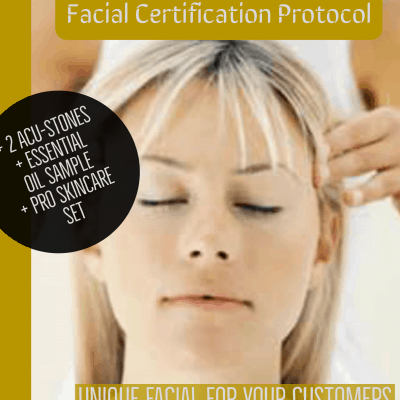
Acupressure Facial Course
$ 99.00 -
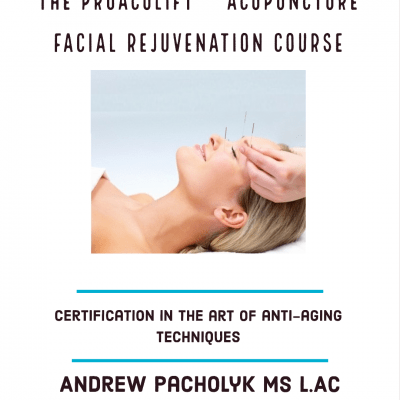
Acupuncture Facial Course
$ 299.95 -

Aller-C
$ 29.95 -
Sale!
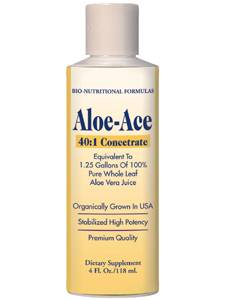
Aloe Vera Liquid
Original price was: $ 34.95.$ 31.95Current price is: $ 31.95. -
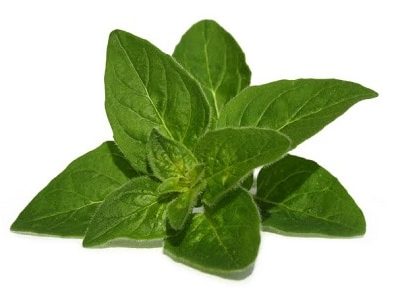
Angel’s Mist Oregano Essential Oil
$ 23.00 -
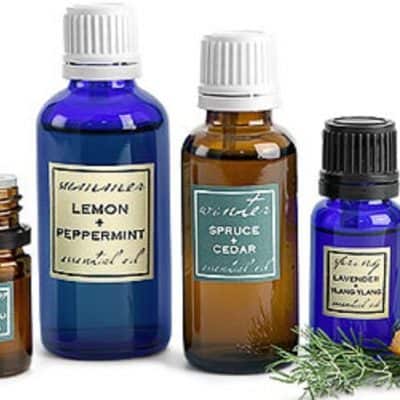
Angel’s Mist Remedy Blend Dermatitis Rub
$ 19.95 -
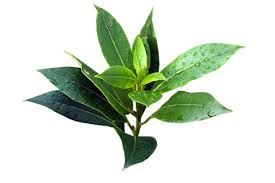
Angel’s Mist Tea Tree Essential Oil
$ 14.00 -
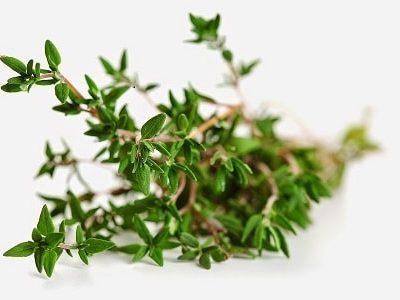
Angel’s Mist Thyme Essential Oil
$ 14.00 -
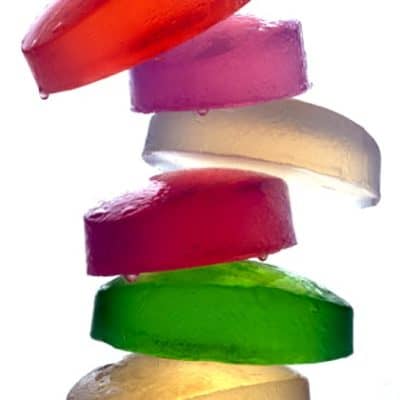
Angel’s Mist Anti-Bacterial Soap
-

Angel’s Mist Aroma Remedy Blends
$ 19.95 -
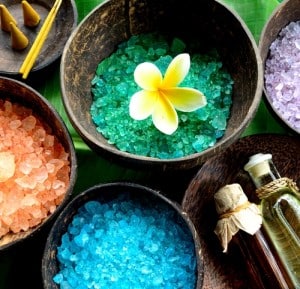
Angel’s Mist Deep Soak Sea Salts
$ 14.95 -

Angel’s Mist Eczema Oinment Blend Remedy Blend
$ 19.95

Contact Dermatitis
Contact dermatitis is a red, itchy rash caused by a substance that comes into contact with your skin. The rash isn’t contagious or life-threatening, but it can be very uncomfortable. Possible causes include soaps, cosmetics, fragrances, jewelry, and plants, such as poison ivy or poison oak. Some people are exposed to substances at work that may cause contact dermatitis. To treat contact dermatitis successfully, you need to identify and avoid the cause of your reaction. If you can avoid the offending substance, the rash usually clears up in two to four weeks. You can try soothing your skin with cool, wet compresses, anti-itch creams and other self-care steps.
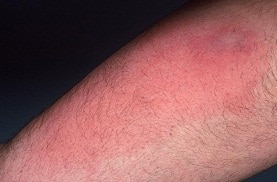
Eczema
Eczema is a type of dermatitis. It appears as dry, cracking, crusting and red patches on the skin. Often there are swelling, weeping blisters. The skin can become inflamed and itchy. These symptoms often appear on the hands, feet, legs and even the ears. Small fluid filled blisters also can appear on the skin. These symptoms become inflamed with a burning and itchy sensation, which often leads to scratching. When this condition is scratched excessively, it can lead to infection. This is often seen in children.

Psoriasis
Psoriasis is an autoimmune disease that appears on the skin, usually in the form of thick, red, scaly patches. It occurs when the immune system sends out faulty signals that speed up the growth cycle of skin cells. Psoriasis is not contagious. It has been referred to as the same process that a wound heals. If you cut yourself, the skin heals by regenerating the top layers. When the wound is healed, the process stops but for psoriasis sufferers, once this process is triggered by any of a number of factors, skin cells are stimulated to continue growing. This usually doesn’t stop unless the cycle is interrupted with treatment.

Urticaria
Urticaria, or hives, is the most frequently appearing dermatologic disorder in the clinic. It appears as raised, circumscribed areas of erythema and edema involving the dermis and epidermis that are very pruritic. Uticaria is an allergic reaction limited to the skin. It often results from: an allergy to certain foods; medications; insect stings or bites. Hives may appear as a symptom of some viral infections such as hepatitis, measles, and mononucleosis. Parasitic infections are common causes of urticaria in tropical climates. Non-infectious diseases are sometimes associated with urticaria, including lupus erythematosus, and hyper- and hypothyroidism. Some women develop urticaria during menstruation.
Herbal Remedies
Herbs should be used both topically, on the surface of the skin and internally, to treat the root cause of dermatitis.
1. Coconut Oil
The amazing antimicrobial and moisturizing properties of coconut oil can greatly help deal with the problem of dermatitis. It can significantly reduce redness, scaling and dryness within a few days.
Gently apply some warm coconut oil on the affected area to soften the skin. For best results, use virgin coconut oil daily before going to bed.
2. Oatmeal
An oatmeal bath can help treat skin irritation, itching and rashes. It will also help keep your skin moisturized.
3. Apple Cider Vinegar
Another effective ingredient that can be used for treating dermatitis is apple cider vinegar. It will relieve inflammation and itchiness. The Psoriasis Foundation hears from people who apply apple cider vinegar to their skin as a treatment for psoriasis. People add it to the bath, mix it with a moisturizer, soak fingernails and toenails in it, and apply it directly to the skin with cotton balls or pads. INTAKE: consume two teaspoons of apple cider vinegar mixed in a glass of water two or three times daily.
4. Aloe Vera
Aloe vera is widely used in the treatment of inflammatory skin conditions like dermatitis. This will help to restore the pH balance of your skin and relieve the itching sensation and skin irritation. It also has moisturizing and antimicrobial properties. Apply fresh aloe vera gel several times a day for a few months to get rid of dermatitis. INTAKE: You can also drink a few ounces of aloe vera juice to enjoy healthy and glowing skin.
5. Vitamin E
One of the best and easiest home remedies for dermatitis is vitamin E oil. This oil promotes healing and provides relief from itching and inflammation. So, apply vitamin E oil on your skin, especially at night before going to bed. You can also try lotions and creams containing vitamin E. INTAKE: Regular consumption of foods rich in vitamin E, such as sunflower seeds, wheat germ oil, peanut butter and corn, can also help prevent eczema.
6. Honey
Honey is a very commonly used ingredient that can help reduce the inflammatory condition of the skin. It also has antiseptic and antibacterial properties.
Herbal Combinations and Formulas
Herbal tinctures are concentrated liquid extracts of the medicinal properties of herbs.
Shake the tincture bottle well. As a dietary supplement, place 1 to 3 droppers full ~ approximately 1 tablespoon or 40 drops, under the tongue, or in juice or water as needed, 2-3 times a day.
Cleanse & Detox – Burdock Root, Buckthorn Root, Chaparral Leaf, Dandelion Root, Red Clover Blossoms, Cascara Sagrada, Nettle Leaf, Milk Thistle Seeds, Ginger Root.
Blood Purifier – Pau D’ Arco, Red Clover, Yellow Dock, Burdock, Sarsaparilla, Dandelion, Cascara Sagada & Buckthorn.
Triphala is a traditional Ayurvedic Indian herbal compound used for constipation and poor bowel tone and is designed to support the body’s natural cleansing process. It is one of Ayurveda’s most important herbal formulas for thousands of years. Triphala is a balanced blend of three Indian Herbal Fruits: Harada (haritaki), Amla (amalaki) and Behada (bibhitaki). Each balanced to vatta, pitta and kapha respectively.
Herbal Teas
In a stainless steel pot, boil desired amount of water. The moment it boils turn the heat off. Add the following herbs in an infuser, muslin bag or tea ball for a single cup or add one-three teaspoons of herbs per cup for larger amounts.
Allow the herbs to infuse for up to 5 minutes. Drink 3-4 cups a day. For flavor-add lemon and sweeten with Stevia or organic honey. These herbs are helpful for gently cleanses, purifying, detoxing, anti-inflammatory. This powerful formula will help remove accumulated toxins in the body. Strong antioxidant, cleanses the colon and stimulates circulation.
D-Tox Tea – Rosehips, Red Clover, Ginger, Nettle, Alfalfa, Dandelion, Goldenseal Leaf, Echinacea, Pan D’Arco, Burdock, Clove, Stevia.
Essiac Tea -Burdock Root, Sheep Sorrel, Slippery Elm Bark, Turkey Rhubarb Root.

Calendula Honey Moisture
Calendula flowers have a reputation for soothing and healing the skin. Milk is famous as a skin remedy. Honey can be used as a dermatitis treatment. Together, we are going to make a soothing moisturizing cream. In a bowl, infuse calendula flower petals in 1 cup of hot water. Add a cup of milk and a teaspoon of honey. Slowly stir in approximately 1 ounce of cornstarch. Cornstarch is not only a binding agent but is cooling and helps with inflammation. Your blend should have the consistency of a moisturizer. If not, add more milk or honey to create this without being too sticky or too runny. Apply the moisturizer on your affected skin.
Honey Bee Variation
Try this easy, DIY skin variation. Honey is used for ingredients that can help reduce the inflammatory condition of the skin. It also has antiseptic and antibacterial properties. Mix equal parts of raw honey, beeswax and olive oil. Heat the mixture in a double-boiler to make an ointment. When it cools, apply it to your skin and leave it on for several hours. Do this daily for several weeks to notice positive improvement in your skin condition.
Aromatherapy Remedies
Essential oils recommended are the anti-inflammatory oils that are effective against dermatitis, hives, eczema and psoriasis such as basil, chamomile, cedarwood, geranium, lavender, lemon, myrrh, patchouli, tea tree, thyme. These oils can ease itching, pain and discomfort, rejuvenate skin, reduce swelling and inflammation.
Basil oil : (Ocimum basilicum) Basil essential oil kills bacteria when applied topically to the skin. Bacteria is a cause common in atopic dermatitis. This is usually with staphylococcal or streptococcal bacteria. Add 4-6 drops to 3 teaspoons of carrier oils such as almond, canola, or jojoba. Massage into the affected area.
Tea tree oil : (Melaleuca alternifolia) speeds the healing of skin irritation. It is good for all kinds of infections, including tinea pedis, tinea corporis and fungal infections that are resistant to antibiotics. Although the tea tree essential oil is slower and less potent in its action, it has far fewer side effects and is considered more effective overall. For topical treatment of skin infections, the oil may be used at a dilution of 15% or added, full strength to the skin.
Lavender oil : (Lavendula Latifolia) kills bacteria and infection and stimulates new cell growth. Lavender can be used to treat the ravages of eczema, psoriasis, dermatitis and any kind of skin inflammation. Massage directly into the affected areas.
Patchouli oil : (Pogostemon cablin) rejuvenates skin cells, so it’s used on mature, aging skin and also treats dry skin prone to eczema and psoriasis. It is also antiseptic and anti-fungal.
Cedarwood oil: (Cedrus deodora) for acne, eczema, psoriasis, and oily skin, mix 2-3 drops in 1 ounce of carrier oil and dab on affected areas. To alleviate nervous tension and stress-related disorders, use 2-3 drops in a diffuser.
Chamomile oil: (Chamaemulum nobile) Roman or German, according to U.S. National Library of Medicine’s MedlinePlus, chamomile has been a popular treatment for eczema and other ailments for thousands of years, particularly in Europe. Apply 2-3 drops directly to the skin as needed.
Not a DIY (do it yourself-er) Try Andrew’s Aroma Remedy Blends:
~ 3 times a day, morning, noon and night, utilize these blends of essential oils:
Angel’s Mist Dermatitis Rub Essential Oil Remedy Blend

Clay Poultice
For centuries natural clay has been used for drawing impurities and extra oils from the skin. Clay, rich in minerals and silica, helps to tone skin and preserve its natural balance. Clay is gently massaged onto the skin. As the clay dries, it tightens the skin, shrinks the pores and helps to pull out impurities out. Clay balances as it revitalizes. Different colored clays (white, red, green) serve different purposes and skin types.
Not a DIY (do it yourself-er) Try our green clay for dermatitis. Mix our natural clay with a teaspoon of our Deep Soak Sea Salts and 6 drops of lavender, chamomile or tea tree essential oils for a spa-like experience.
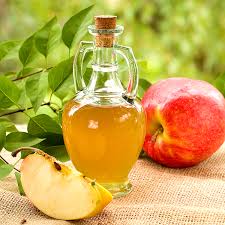
Apple Cider Vinegar RX
Mix equal parts of apple cider vinegar and water. Add 10 drops of lavender essential oil to this mix. Use a cotton ball to apply this solution on the affected skin. Allow it to sit for about 30 minutes, and then clean the area with a damp cotton cloth. Repeat this remedy daily for a few weeks to see positive results. INTAKE: Another option is to consume two teaspoons of apple cider vinegar mixed in a glass of water two or three times daily (do not consume essential oils!)
Hydrotherapy
The mysterious and amazing healing power of water has been utilized for centuries. Water cleanses, refreshes and restores all life. We are always drawn to water. Be it a soothing fountain or majestic waterfall. Water is a carrier. It flows. It moves along the line of least resistance to find its way to the ocean where comes and goes in the ebb and flow of tides and waves. The appeal is inexplicable! We crave water, maybe because our bodies are made up of a large percent of it. Maybe because we instinctively know how it can heal us. Hydrotherapy is the use of water in any form, in the treatment of dis-ease.
Avoid hot baths or showers; lukewarm water is best.
Take warm bath. Fill the bath tub with warm water. As the tub fills with water add 2 spoons of Angel’s Mist Deep Soak Sea Salts to the bath water. Soak for 15-20 minutes.
Soaking in sea salt is a well known remedy for psoriasis with dramatic results though its maintenance. The same is used in joint inflammation and assisting in detoxification, restoring minerals and increasing circulation.
Some patients who suffer from idopathic (unexplained) skin rashes, dermatitis or reddening of the skin have found amazing relief from soaking in sea salt.
Use a mild soap or a non-soap cleanser, or less soap than usual.
Consider a relaxing bath with the cleansing anti-bacterial effects of Angel’s Mist Anti-Bacterial Soap -A cleansing blend of Lavender, Tea Tree essential oil makes this soap wonderful for creating clean and bacterial-free skin.
Moisturize. Apply lotion or cream within a few minutes of getting out of the shower or bath to seal the moisture in your skin.

“Oatmeal” Bath
An oatmeal bath can help treat skin irritation, itching and rashes. It will also help keep your skin moisturized. Repeat this ritual daily for one month.
Try This bath:
1 tablespoon baking soda
1 cup apple cider vinegar
1 cup crush oatmeal
15 drops of tea tree oil
6 drops of lavender oil
1 cup witch hazel
1 cup whole milk
Mix ingredients and add to hot, running water. Relax in the bath for 15-20 minutes. Rinse off, dry off, and clean your tube! After bath, massage moisturizing pearl cream, body lotion or calendula cream into your skin.
Nutritional Advise
Water should be a very important part of any nutritional program. 6-8 eight ounce glasses a day. Water helps to flush away toxins, hydrates the skin and tonifies the body.
If you suffer from eczema, psoriasis or dermatitis, in general, you can make a positive difference in the health of your skin by eating plant based proteins, vegetables, fruits, moderate amounts of whole grains (8 ounces), moderate amounts of animal proteins (4 ounces), and vitamins znd minerals including, zinc, Vitamin A, C, E, Omega-3 fatty acids and Quercetin.
Zinc studies indicate that zinc supplements reduce the severity of dermatitis. In one study, zinc was found to be as effective as oral antibiotic therapy. Nutritional doctors sometimes suggest that people with dermatitis take 30 mg of zinc two or three times per day for a few months, then 30 mg per day thereafter. It often takes twelve weeks before any improvement is seen. Zinc gluconate 30-80 mg daily, helps in healing tissue and helps to prevent scarring.
Vitamin A such as 10,000 IU per day have been used successfully to treat severe skin disorders. Too much Vitamin A can be toxic. Only use the recommended daily dose or Vitamin A from beta-carotene along with other mixed carotenoids. Vitamin A and 400 IU Vitamin E, (use emulsion for easier assimilation), strengthens the protective epithelial tissue.
Vitamin B6 at 50 mg per day may alleviate premenstrual flare-ups of acne experienced by some women. Vitamin B complex (high potency) with extra B6 and pantothenic acid, take 50 mg 3 times a day, is important for healthy skin tone.
Vitamin C take (1,000 mg 2 to 4 times per day or to bowel tolerance) can act as an antihistamine.
Vitamin E can be taken orally as well as applied topically to affected areas. Take 400 IU once or twice a day.
Chromium (GTF) used as directed, aids in reducing infections of the skin.
Lecithin one capsule before meals, needed for better absorption of the essential fatty acids.
Primrose oil used as directed on the label, supplies the essential gamma-linoleic acids needed for healing. Unsaturated fatty acids one tbsp. cold-pressed sesame or flaxseed oil (linseed oil) or take in capsule form, needed to keep the skin smooth and soft, and to repair damaged cells.
Omega 3 Fish Oil is one of my top picks for any skin disorder! EPA/DHA ratio should be as close to 1,000 mg as possible. Take 1,000 mg twice a day. In one study people taking fish oil equal to 1.8 g of EPA (one of the omega-3 fatty acids found in fish oil) experienced significant reduction in symptoms of eczema after 12 weeks. Researchers think that may be because fish oil helps reduce leukotriene B4, an inflammatory substance that plays a role in eczema. Talk to your doctor before taking fish oil if you are taking blood-thinning medications.
Vitamin D for men and women that is present in food, supplements or manufactured by sunlight is converted in the body into a powerful hormone-like molecule called 1,25-dihydroxyvitamin D. That compound and a related naturally occurring molecule (1 alpha-hydroxyvitamin D3) have been found to be helpful when given orally to people with psoriasis. Topical application of these compounds has worked well in some studies. These activated forms of vitamin D are believed to work by preventing the excessive proliferation of cells that occurs in the skin of people with psoriasis.
Quercetin, the most effective bioflavonoid for anti-inflammation, is especially useful in decreasing inflammatory leukotrienes synthesis. Theseleukotrienes are 1000 times as potent as histamines in promoting inflammation, and the importance of reducing their production cannot be overstated. Excessive formation of these potent inflammatory chemicals has been linked to inflammatory diseases such as asthma, eczema, gout, psoriasis, and the inflammatory bowel diseases. Quercetin has also been shown to reduce pain and to control allergies, and it protects the cell membranes due to its antioxidant activity. Bioflavonoids such as Quercetin, might act synergistically with Vitamin C as both have antihistamine activity.
1. Eating a diet that focuses on fresh vegetables and fruits.
2. Eat whole grains, legumes, nuts and seeds.
3. Avoiding drugs, excessive coffee and alcohol.
4. Taking a high potency multiple vitamin and also consider flax, fish or borage oil and mineral supplements.
5. Take nutritional/herbal supplements to promote and enhance skin health and function.
6. Fasting is one of the best ways to increase elimination of wastes and enhance the healing process of the body and skin.
7. Juice Therapy is an excellent way to get your fruits and vegetable fresh and in their natural form. Blending fruits and/or vegetables into a great juice creation or smoothie can be an excellent snack or meal replacement.
Eczema : Red grapes,carrot, spinach, cucumber and beet.
Psoriasis : Grapes, carrot, beet, and cucumber.

The Full Spectrum Diet
As a Nationally Certified Herbalist and Licensed practitioner of Acupuncture and Chinese Medicine, Andrew Pacholyk, MS, L.Ac. has spent years developing a natural healthcare plan, which incorporates the benefits of fresh, full spectrum foods based on their color and their properties. A balance of attractive colors in the foods you eat, play an instinctual part as to what the body needs in the moment. The color energy of fruits, vegetables, vitamins and minerals all come into play when furnishing your body with the proper nourishment.
This easy to use system monitors healthy weight by the colors of food on your plate!
The Full Spectrum Diet is based on the proponents of color therapy and the holistic principles of eating mindfully, eating to nourish the body and seeing food in a more natural and spiritual way. Meals rich with different colored fruits, vegetables, meat, chicken, fish and whole grains means you are getting a healthy variety of nutrients that your body needs. It is a simple way to eat healthy in order to achieve healthy results! Want to know more?

Allergens and Protein
Excessive protein may irritate the immune system and keep it in a state of over reactivity. The protein in cow’s milk, specifically, is a frequent offender, and for people with a genetic predisposition to skin disorders may be a hidden cause of problems. One general treatment strategy,therefore, is to follow a low-protein diet and try to eliminate milk and milk products.
Food allergies can play a major role during childhood. They are related before age 6. You can manipulate an infant’s diet and do well in helping their skin. Eggs, orange juice, and milk have been implicated as it aggravates in children. Parents should consult with their physicians about trying elimination diets. In general, these are foods that should not be eliminated. It is only after testing them out by, by first eliminating them and then re-introducing them back into the diet. Such diets seem to work best in infants less than 2 years old. After age 6, it is believed by experts that food plays a minimal role in most people.
For adults, diet manipulation should be undergone by each individual. If you think there’s any food you eat that has an adverse effect on your body, avoid it and see what happens, If your problem clears up, you may have a food allergy. Other foods that have shown to aggravate eczema include corn, corn syrup, popcorn, corn meal and corn starch. This ingredient is found in hundreds of processed food products. Consider trying the Allergy Elimination Diet.
Alcohol appears to be a risk factor for psoriasis in men but not women. It would therefore be prudent for men with psoriasis to drink moderately, if at all. Some evidence suggests that people with psoriasis may improve on a hypoallergenic diet. Eliminating gluten (found in wheat, oats, rye, and barley) improved psoriasis for some people.
Homeopathy
This medical system uses infinitesimal doses of natural substances to stimulate a person’s immune system and body’s natural defenses. Homeopathic remedies are named for the plant or animal ingredients they are made from. Homeopathy not only offers relief from temporary disorders but, can provide long term healing of a person due to its individual and “holistic” approach. This type of healing makes it easier and possible to avoid recurrence or relapses in the future and homeopathy stimulates the body’s natural defense system by reestablishing normal immune system and cell functioning.
Dermatitis:
Dr. Reckeweg Eczema Homeopathic Liquid is homeopathic medicine for the temporary relief of itching associated with eczema. This is a homeopathic combination formulated to treat eczema from the inside out!
Calendula applied to the skin, particularly if the affected area is inflamed; this remedy soothes the skin condition.
Rhus toxicodendron used as a remedy for inflamed skin resulting from direct contact with an irritating substance; like dermatitis and eczema.
Sulphur can help with itching, sore, inflamed eruptions with reddish or dirty-looking skin often indicate a need for Sulphur. Itching may be worse from scratching, and worse from any form of heat, especially bathing or washing. Individuals who need this remedy are often inclined toward convoluted mental notions and tend to give order and neatness a low priority.
Urtica urens for large, red rashes (particularly those related to allergies) that itch and burn intensely.
Traditional Chinese Medicine
Traditional Chinese Medicine (TCM) is the oldest, continually practiced, and professionally administered health care system in the world. It is a documented medical system spanning over 2,500 years based on comprehensive philosophies, rational theories, clinically tested and empirically verified by over 100 generations of highly educated practitioners.
Chinese Medicine is a total system of internal medicine, which is comprised of a diagnostic procedure based on signs, symptoms and treatment styles including acupuncture, herbal medicine, exercise, diet and meditation. It’s foundation is based on the principles of balance; the interdependent relationship of Yin and Yang. Through this balance, health is achieved and maintained.
Acupuncture treatment for skin disorders is an essential part of therapy. Stimulation of acupuncture points increases the production of endorphins and simultaneously activates the immune and endocrine systems.
Traditional Chinese Herbal Medicine use the “Three Yellows” (San Huang San formula) plus Sophora root to treat a large variety of skin disorders, including acne, eczema, dermatitis, rashes, and psoriasis. The formula, which has been in use for centuries, consists of four cleansing herbs which clear internal heat, stops itching and prevents secretions. Three of the four herbs in this formula have a yellow color, therefore, its name.
These three herbs, Rhubarb (Da Huang), Phellodendron (Huang Bai) and Skullcap (Huang Qin) -the “Three Yellows” plus Sophora root (Ku Shen), were clinical researched and found to have anti-bacterial, anti-fungal and anti-viral qualities. The alkaloids in Ku Shen are effective for treating urticaria, acute eczema, chronic eczema and other types of dermatitis.
Traditional Chinese Medicine also recommends changes in you diet. People who suffer from a variety of skin disorders should avoid alcohol, spicy foods, fish, all shell fish and whole dairy. Consider adding leafy green vegetables and cooling fruits daily.
Our granule formula, DermaBlend contains Rhubarb (Da Huang), Phellodendron (Huang Bai) and Skullcap (Huang Qin) -the “Three Yellows” plus Sophora root (Ku Shen), and can be made as a tea, cooled and then applied topically with a cotton ball for several applications until the skin has healed.

Acupuncture and Dermatitis
Several clinical trials focusing on less than a hundred cases were included in the 2002 World Health Organization nonserial publication, Acupuncture: Review and Analysis of Reports on Controlled Clinical Trials. According to WHO, there were random clinical trials that proved the effectiveness of acupuncture on chloasma, herpes zoster, pruritus, and neurodermatitis. Luan et al reports in Chinese Acupuncture and Moxibustion (1996), 60 cases of chloasma recovered after treatment with auricular acupuncture and acupressure, which produced significantly better effects than Vitamins C and E.
In another report in the World Journal of Acupuncture-Moxibustion (1994), Chen et al observed the curative effects of laser acupuncture on the human (alpha) herpes virus 3. The procedure brought about pain relief and scar tissue formation more quickly than polyinosinic acid treatment.
Aside from performing significantly better than other treatment modalities, acupuncture also produced anti-pruritic effects (British Journal of Dermatology, 1987) and proved to be effective in treating neurodermatitis using the three-step seven-star needling therapy (Journal of Guiyang Chinese Medical College, 1998).
Ayurveda
The principle medical system of India is known as Ayurveda and is over 5,000 years old. This “Science of Life” is considered the art of living in harmony with nature. Developed from the ancient text of The Vedas, Ayurveda views the human body as a “homunculus” of our cosmic Universe, regulated by the balance between three primordial humours, call Dosha.
Your dosha are your Ayurveda mind and body type. There are three doshas in Ayurveda: Vata, Pitta, and Kapha. We each have all three of the doshas in our physiology, just in different proportions, so your dosha is unique and personal; it is like your fingerprint.
According to Ayurveda, The Pitta dosha is responsible for the luster, glow, color, texture, and temperature of our skin. It is the force within the body that is in charge of the functions of sweating, digestion and metabolism, heat, light, lubrication, instability and external assults (elements, products, environmental factors).
Its roots are in the lower half of the stomach and the small intestine and also the blood, eyes, skin, sweat glands, liver and spleen. Primary symptoms are fever and any excess heat in the body, including inflammation, no matter where it is in the body. This is almost always a sign of aggravated Pitta. The skin is one of the primary places where Pitta resides in the body, so, balancing Pitta systemically in turn supports healthy skin. It will assist in the physiological functions of the body to further prevent skin irritations from beginning all together.
Digestive Health
Geared toward the health and well-being of each individual dosha. Maintains healthy digestive acid levels and a healthy stomach lining while supporting a comfortable post-meal experience. Consider Vata Digestion, Pitta Digestion or Kapha Digestion formulas.
Neem
Neem has traditionally been used to purify the blood, cleanse the liver and support the immune system. It is also commonly used to support healthy skin and to maintain healthy blood glucose levels. This very famous and popular herb is found whole, in powder, pills and oil.
Healthy Skin
Healthy Skin removes excess pitta from the system while nourishing the tissues and promoting a beautiful, vibrant appearance. This formula is a synergistic blend of Ayurvedic herbs that have been used for centuries to promote healthy skin and a clear complexion.
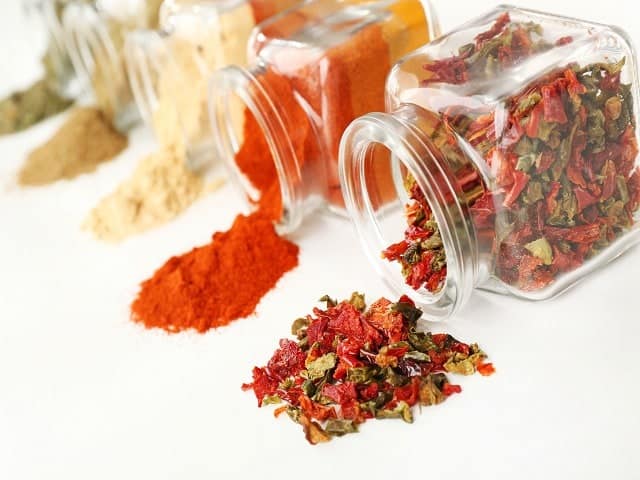
“Neem Clean”
Neem (Azadirachta indica), is a tree. The bark, leaves and seeds are used to make medicine. The stem, root bark, and fruit are used as a tonic and astringent. The leaves are ground to make tea or apply directly to the skin as a poultice for healing skin disorders. Grind 10-15 neem leaves (or buy the powdered version) and mix with a pinch of turmeric powder. Add enough milk, almond milk or warm water to make a paste and apply this to affected areas. Allow to dry, about 15-20 minutes, then, rinse off. Repeat as required. Not a DIY, try our Organic Neem Powder.
“Skin” Tea
Turmeric (Curcuma) is a plant and a staple in Indian cuisine and medicine. You probably know turmeric as the main spice in curry. Fennel Seed (Foeniculum vulgare) is a sweet, anise flavored digestive herb. Boil 5 cups of water in a covered saucepan and add 1/2 teaspoon each of turmeric and fennel seeds. Let this mixture steep for at least 10 minutes with the lid on. Strain out the seeds and pour liquid into teapot. Sip small amounts throughout the day and watch your skin begin to glow.
Color, Light and Chromotherapy
Phototherapy is the supervised use of ultraviolet (UV) light to treat skin conditions, including atopic dermatitis. Ultraviolet B (UVB), ultraviolet A (UVA), or a combination of UVB and UVA may be used during therapy.
Treatments are usually given 2 times a week. UVB treatment requires little time (from seconds to minutes). UVA treatment is more time-consuming (typically 20 minutes for a treatment). it seems to help about 60-70% of patients with eczema that have not responded adequately to topical treatments, though it does not work for everyone. When it does work, it is not a rapid improvement like some treatments: generally 1-2 months of steady treatment is necessary to start to see improvement. Fortunately for many patients, when it does work it seems to put the eczema in a quiet (remittive) state for a longer period of time, sometimes even long after the phototherapy has ended.
It is also important to avoid the UVA aspect of sunlight which is very damaging to skin, and can accelerate aging and progression towards skin cancers. Whenever it is necessary to be out of doors, (especially in the heat of the summer) it is important to shield the body from unnecessary sun exposure. Wear cotton clothing that covers as much skin as possible. In the summertime, you can protect against overheating by wearing clothes that are loose and lightweight.
DO dress in, and expose yourself to, an abundance of cooling colors such as greens, blues, purples and whites.
Blue – is peaceful and soothing. Calming tired nerves, alleviating agony and pain we suffer from physical stress. It has a pacifying effect over our nervous system and brings us great relaxation. Cool, soothing and sedative, blue alleviates pain, reducing bleeding and heals burns. It is beneficial in the treatment of dysentery, colic, asthma, respiratory disorders, high blood pressure and skin aberrations.
Green – gives a feeling of renewal, new life, freshness, and clarity. The heart is the center of the soul and it is the heart that makes us one with our fellow man. Most importantly, it harbors love energy, the leading principle of life. Being with loved ones, family, and friends, strengthens the heart energy.
Purple or Indigo – combines the blood-warming red and the cooling antiseptic blue. It is an excellent stimulant without being an irritant. It is beneficial in the treatment of advanced stages of constipation, hydrocle, leucorrhoea, many disorders of the stomach and womb, cataract, migraine and skin disorders. It exerts a soothing effect on the eyes ears and the nervous system.
White light – is the combination of many different frequencies of visible light from all parts of the visible spectrum. The only way we can see these frequencies as separate colors is to separate them into a rainbow. Sunlight emits the full spectrum of visible light in the form of white light. Sunlight reflects off of white light.

“Let There Be Light”
Psoriasis
Psoriasis light treatment, also known as UV Phototherapy, exposes the T-cells, causing them to die. In this way, the light therapy reduces inflammation, and slows the rate of skin cell production. Psoriasis light therapy typically clears skin in 20-25 sessions. Long-term remission occurs for 90% of psoriasis patients. Psoriasis light treatment is generally well-tolerated in both adults and children with psoriasis.
Lichen Planus
On the skin, lichen planus usually appears as purplish, often itchy, flat-topped bumps. When mucous membranes are affected such as tissues inside the mouth or vaginal wall, lichen planus appears as lacy white patches or sores that can be painful. Lichen planus affecting the skin may last from a few months to several years. It usually clears up on its own, but treatment may be necessary to suppress itching and promote healing of the skin. Since the disorder occurs when the immune system mounts an attack against cells of the skin or mucous membranes, ultraviolet B (UVB) light can be very effective.
Vitiligo
Vitiligo is characterized by loss of pigment in patches of the body. “Vilitlight light therapy” can help create repigmentation and is currently considered the “gold standard” treatment when vitiligo covers 20% or more of the body.
Phototherapy with UVA-1 wavelength lights are approved for treatment of morphea, scleroderma, lupus (SLE) and graft vs host disease, but therapy is done in physician’s offices.
Emotional Aspect:
There is an emotional aspect to every illness. Often times, it is the emotional thoughts or “excess emotions” that will lead to illness. The following therapies are utilized for calming the mind, help with stress relief and focuses on our mental powers over any situation. The ability to balance your emotional, mental, physical and spiritual self are exceptional tools on your healing journey. Here are some suggestions:
As an assault on our confidence and self-esteem, dermatitis can tip the scale of our emotions, that are (systemically) already out of balance!
The skin is a reflection of hidden realities within our bodies. Skin conditions are rarely caused by an issue on the surface; they are far more likely the result of a deeper imbalance.
The improvements you’ll notice on the surface of your skin are usually the result of a more significant transformation
Stress and Dermatitis
It is important to remember that the skin is deeply influenced by patterns in the emotional and energetic body. Researchers at the Kent & Canterbury Hospital in England, in a five year study, discovered that more than two-thirds of the people with chronic skin problems had experienced a “major life event“, such as a serious trauma, rape, illness or death in the family, just before or occurring at the same time as their skin problems.
The fiery emotions of stress, anger, anxiety and fear are all noted triggers of both dermatological disorders and allergies (not to mention 1,000 other disorders). These more subtle influences should certainly be considered when trying to heal your skin. Unchecked emotions such as rage, envy, and judgment can manifest inflammatory skin conditions, but the general stress level should be taken into account as well.
Dermatitis has multiple roots. One is inherited, since these conditions are more frequent in children of parents with allergic and dermatitis histories. Another is in the mind and nervous system. Emotional Stress can trigger skin reactions, and relaxation techniques can moderate them. A person who is strongly allergic to daisies may react to the sight of a plastic daisy, demonstrating the involvement of mind over body in the learned aspect of these inappropriate immune responses.
Let it Go, Let it Go, Let it Go
By giving this fear up to the Universe to handle, you are essentially allowing yourself to release this fear, and in turn strip away any kind of meaning or significance it may have upon you. By letting go, this allows us to move to the next level in our lives. The next natural process. Often times, this is a fear in itself. The fear of “what will happen when I DO move to my next stage in life?” Let your guard down. Let it go. This is not a fear. This is a great journey. Allow yourself to follow it.
Metaphysical Thoughts
The power of your mind and your belief system has everything to do with the condition, the speed and the way that you heal.
* Our Belief System is one of the major factors that can get us through situations or can cause our life to crumble around us! I do believe that there is a lot of innate goodness and balancing our minds do subconsciously to get us through hard times. The other portion of this is how we “program” ourselves to deal with any given situation.
* Our self-confidence and self-love are often the key to opening and strengthening this portion of our thoughts which in turn emanates from ourselves!
* Energy follows thought. Program thought to be positive and your energy will reflect it!
* Really appreciating what we DO have as opposed to what we would like to have, sometimes makes a significant difference. This is always an important element in healing that is often neglected.

Music/Sound Therapy
Vibrational medicine, which validates that everything in the universe is in a state of vibration and the frequency at which an object or person most naturally vibrates is called resonance. When an organ or part of the body is vibrating out of tune or non-harmoniously, it is called “dis ease” or disease.
Music is a powerful tool that can be used in so many ways. It has been proven that the type of music that makes a person relax or become receptive is not any one kind. It all depends on the individual and their affinity with it.
Soothing music is recommended for stress reduction by calming the sympathetic nervous system.
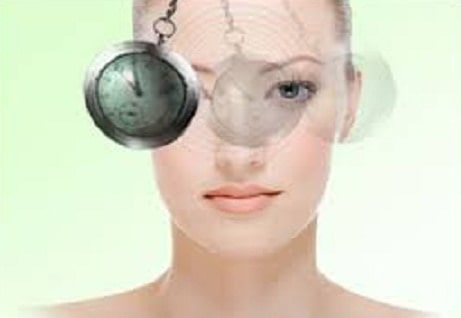
Hypnotherapy
Skin disorders cross-over the mind/body border. There is no question about its physical reality, since you can die from an allergic reaction, but you can also make it vanish by changing your mental and emotional state. It is a fact that severe cases disappear when people switched jobs, left a spouse, or eliminated sources of stress.
One way to take advantage of the mind/body connection in search of dermatitis relief, is to experiment with hypnotherapy. Hypnosis can lessen or completely prevent allergic reactions, sooth associations of pain and itching with dermatitis and can facilitate the immune system’s unlearning of its pointless habits. Contact Andrew for a local Hypnotherapy.

Flower Power
The essence of flowers is a subtle, aromatic and volatile liquid extracted from the flowers, seeds, leaves, stems, bark and roots of herbs, bushes, shrubs and trees through distillation. It is a form of vibrational healing, which works on many levels. Flower remedies are homeopathic essences, which benefit a specific mental and emotional state. An essence starts to work immediately but, unlike drugs, adjustments will be subtle which you may not notice for a few days.
Crab Apple is a cleansing remedy that works well when added to water for washing and baths.
Impatience is useful for people who’s rashes are associated with feelings of irritability and impatience.

Yoga Therapy
Yoga poses can be good alternatives to “traditional” health remedies because they relax the body and mind, improve circulation and help the body through it’s healing process. Try the Deep Diaphragm Breath: Sit with your legs crossed in a comfortable position. Breathe slowly and evenly from your diaphragm, through your nose. Fill your lower abdomen, lungs, then chest with air. Hold for a four count then slowly exhale the air out from your chest, lungs, then lower abdomen. Repeat 3 or 4 times. That’s it! Just allow your shoulders to drop and your face relax as you breath, deep.
Also consider Child’s Pose, Cat, Head to Knee, Knee to Chest, Laying Down Twist, Standing and Seated Forward Bends, Standing Knee Squeeze..
Crystal Reference
Graphites is a mineral found in marble, granite and crystalline rocks. It is a mixture of carbon, silica and iron. It was first realized to help skin issues when mine workers were using the black lead to heal cold sores. It is one of the top homeopathic remedies for healing difficult skin conditions.
Silica has widespread industrial applications including use as a food additive, anti-caking agent, and as an excipient in drugs and vitamins. Chemically, silica is an oxide of silicon, (silicon dioxide) and is generally colorless to white and insoluble in water. When associated with metals or minerals the family of silicates is formed. There are several water soluble forms of silica referred collectively to as silicic acid, Orthosilicic acid is the form predominantly absorbed by humans and found in numerous tissues, bone, tendons, aorta, liver and kidney. Compelling data suggest that silica is essential for health.
Sulphur can help with itching, sore, inflamed eruptions with reddish or dirty-looking skin often indicate a need for Sulphur. Itching may be worse from scratching, and worse from any form of heat, especially bathing or washing. Individuals who need this remedy are often inclined toward convoluted mental notions and tend to give order and neatness a low priority.
The Complete Chakra Kit stimulates the seven main energy sources which govern all the major organs and psychologically alters and clears the body’s energy in order to allow healing to take place. A great stress relieving meditation tool!
The Aura Crystal Cleanse Kit focuses on the eternal assaults that affect our first line of defense…. our aura. This fantastic set of crystals are used for healing meditation, soothing stress relief and creating a calming environment and atmosphere around you.
Peacefulmind Remedy Bags are our fantastic prescription remedies for a multi-layered approach to treating specific disorders. These very special bags are a plan of care for treating problems such as arthritis, anxiety, stress or pain – just to name a few. These bags features 3 of the crystals for treating a disorder, a sample herbal remedy, a meditation, an essential oil blend and acu-point self-massage techniques. Also with great tips and remedies for recovery. Choose from over 80 disorders.
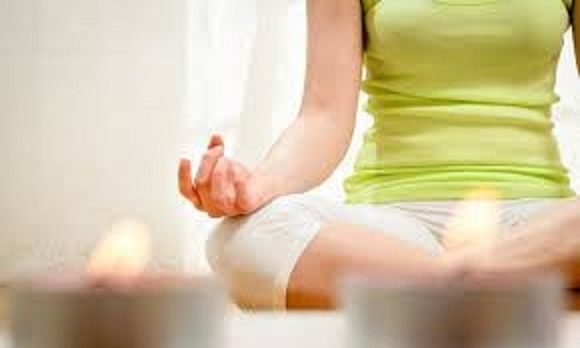
The Power To Let Go
Fold your hands gently in your lap and close your eyes. Take a few deep breaths. Then just sit. If you have never meditated before, you will probably feel as if your mind is full of thoughts. Don’t try to stop the thoughts, just watch them. Imagine that you are a flower bud along side a river bank and that your thoughts are the water flowing by. Don’t try to stop the water, just let it go. This requires you to relinguish your control. To just let something “be” as it is.
“A blooming flower bursts forth from its bud when it is ready. Holding on too long, or expanding too early, faces the late Spring heat or the early morning frost. The right and most appropriate time is when the flower is ready… The process has its own timing and it creates changes in your life when those changes are ready to transform.”
Your power to let go will come with each breath, with each exhale and with each realization that the consequences of “not” letting go, denies you the power to transform.
~ When you feel ready and connected, slowly open your eyes. Give yourself some time to recover. You may even want to journal about your experience.
Crystal Associations
amethyst, aventurine, lapis lazuli, clear quartz, rose quartz, selenite

Study Energy Medicine at Home
The Peacefulmind.com Homestudy Courses make it possible for anyone to study energy medicine at home, on your time! These certifications programs are offered by the National Association of Holistic Wellness
*Transitions: The Transformational Guide and Workbook for Creating Great Health This is the culmination of years of Andrew Pacholyk, MS, L.Ac. clinical work. This is a manual you can use, whether you are healthy or ill or somewhere in between and you want to re-balance your mind, body and spirit to become the whole person you can be! This workbook gives you a plan to take care of yourself. It can be used over and over to find balance and keep yourself as healthy as possible. It gives you “tools” to use when and where you need them. It helps to evaluate where you are in your journey and offers ways to get you exactly where you want to be! Want to know more?
*The “Color Elite” Color Therapy Certification Course Andrew Pacholyk, MS, L.Ac. has finally published his most complete healing course using the power of color and light therapy. This ultimate guide to chromotherapy teaches you about color and every aspect of it, how it is used in different therapeutic settings and how it has become such a great healing modality, no matter what profession you are in you will learn how to incorporate color into your daily life! Want to know more?
*The Crystal Light Crystal Therapy Course This incredible course is our biggest and most popular course on the internet! This is the study of crystals and how to heal with earth’s precious gems! Want to know more?
*Chakracology – A Workbook and Manual This workbook format allows you to look at the energy of the Chakra and how they affect us on a daily basis. The book allows you to work through each center on a mental, spiritual, as well as a physical level and then find ways to re-align, balance and manage your energy in a positive way! Want to know more?
*The Healing Art of Touch – Massage Therapy Homestudy Learn the art of touch and massage therapy through Andrew’s very extensive course. Complete anatomy lessons, varied techniques and amazing information is offered in this course. Also learn the business aspects of massage, how to cope with clients that are difficult and energy transference are just a few of the many topics covered! Want to know more?
*What’s Your Heart Telling You? Finding Love and Romance – The Workbook and Journal Andrew Pacholyk, MS, L.Ac. has now published his newest work based on years of personal intimacy, clinical experience, counseling and client research on the ways to navigate love, sex, romance and relationships in a modern day world. Andrew has devised this very thorough workbook and journal with questionnaires, exercises, quotes, tips, meditations, feng shui, aromatherapy, massage and herbal applications for creating the perfect scenario for finding, coping and keeping love in your life! Want to know more?
*The Feng Shui Journal The Peacefulmind.com Feng Shui Journal makes it possible for you to improve relationships, maximize career potential and enhance your environment! * We are honored to offer the Feng Shui Journal for beginner to advanced Feng Shui practitioners. This journal covers an extensive background on Feng Shui techniques history, usage, clearing, cleansing, manifesting and helpful information in order to bring balance back into your life! Want to know more?
What are your experiences with dermatitis?
Sharing your own experiences often helps others. We’d love to know in the Peacefulmind Community.